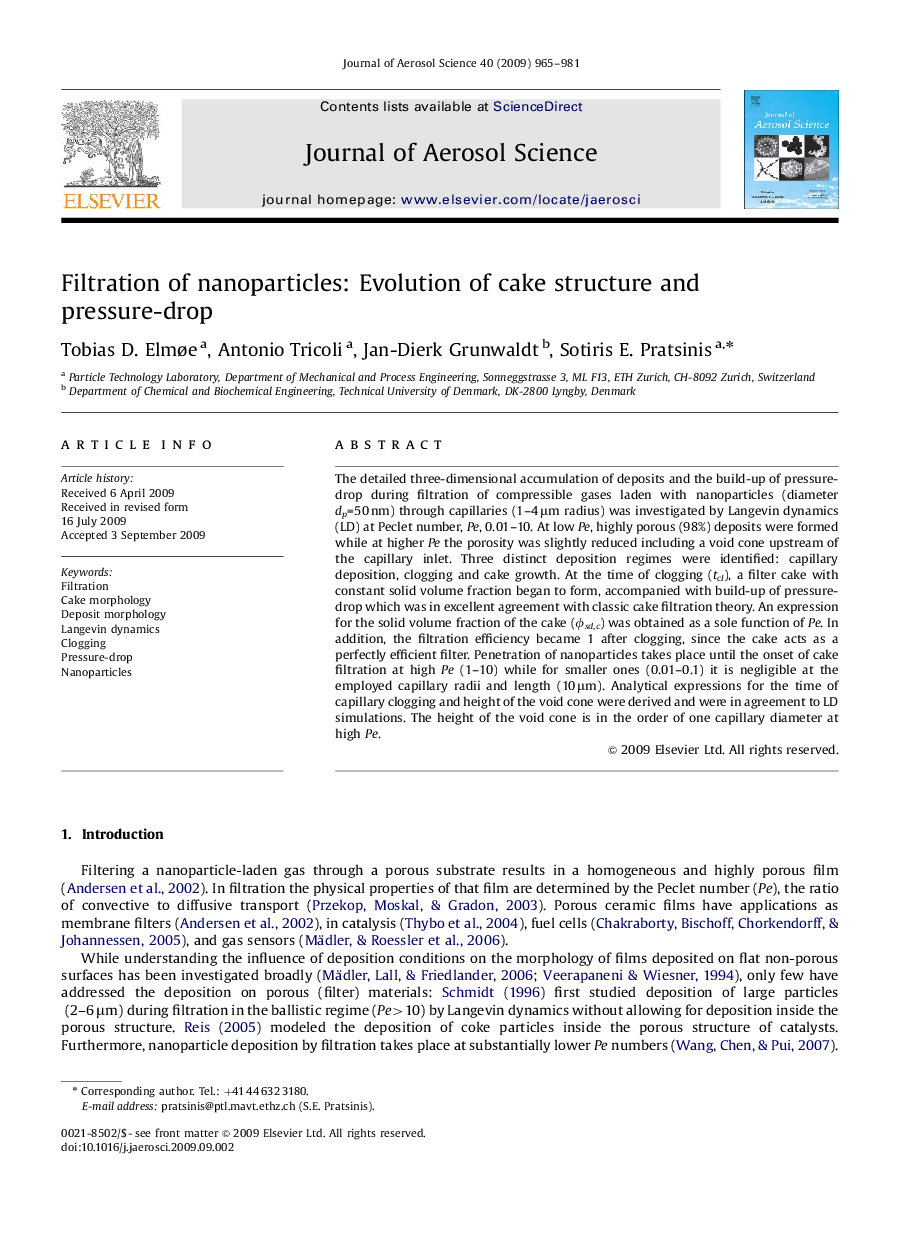| Article ID | Journal | Published Year | Pages | File Type |
|---|---|---|---|---|
| 4452937 | Journal of Aerosol Science | 2009 | 17 Pages |
The detailed three-dimensional accumulation of deposits and the build-up of pressure-drop during filtration of compressible gases laden with nanoparticles (diameter dp=50 nm) through capillaries (1–4 μm radius) was investigated by Langevin dynamics (LD) at Peclet number, Pe, 0.01–10. At low Pe, highly porous (98%) deposits were formed while at higher Pe the porosity was slightly reduced including a void cone upstream of the capillary inlet. Three distinct deposition regimes were identified: capillary deposition, clogging and cake growth. At the time of clogging (tcl), a filter cake with constant solid volume fraction began to form, accompanied with build-up of pressure-drop which was in excellent agreement with classic cake filtration theory. An expression for the solid volume fraction of the cake (φsd,c) was obtained as a sole function of Pe. In addition, the filtration efficiency became 1 after clogging, since the cake acts as a perfectly efficient filter. Penetration of nanoparticles takes place until the onset of cake filtration at high Pe (1–10) while for smaller ones (0.01–0.1) it is negligible at the employed capillary radii and length (10 μm). Analytical expressions for the time of capillary clogging and height of the void cone were derived and were in agreement to LD simulations. The height of the void cone is in the order of one capillary diameter at high Pe.
